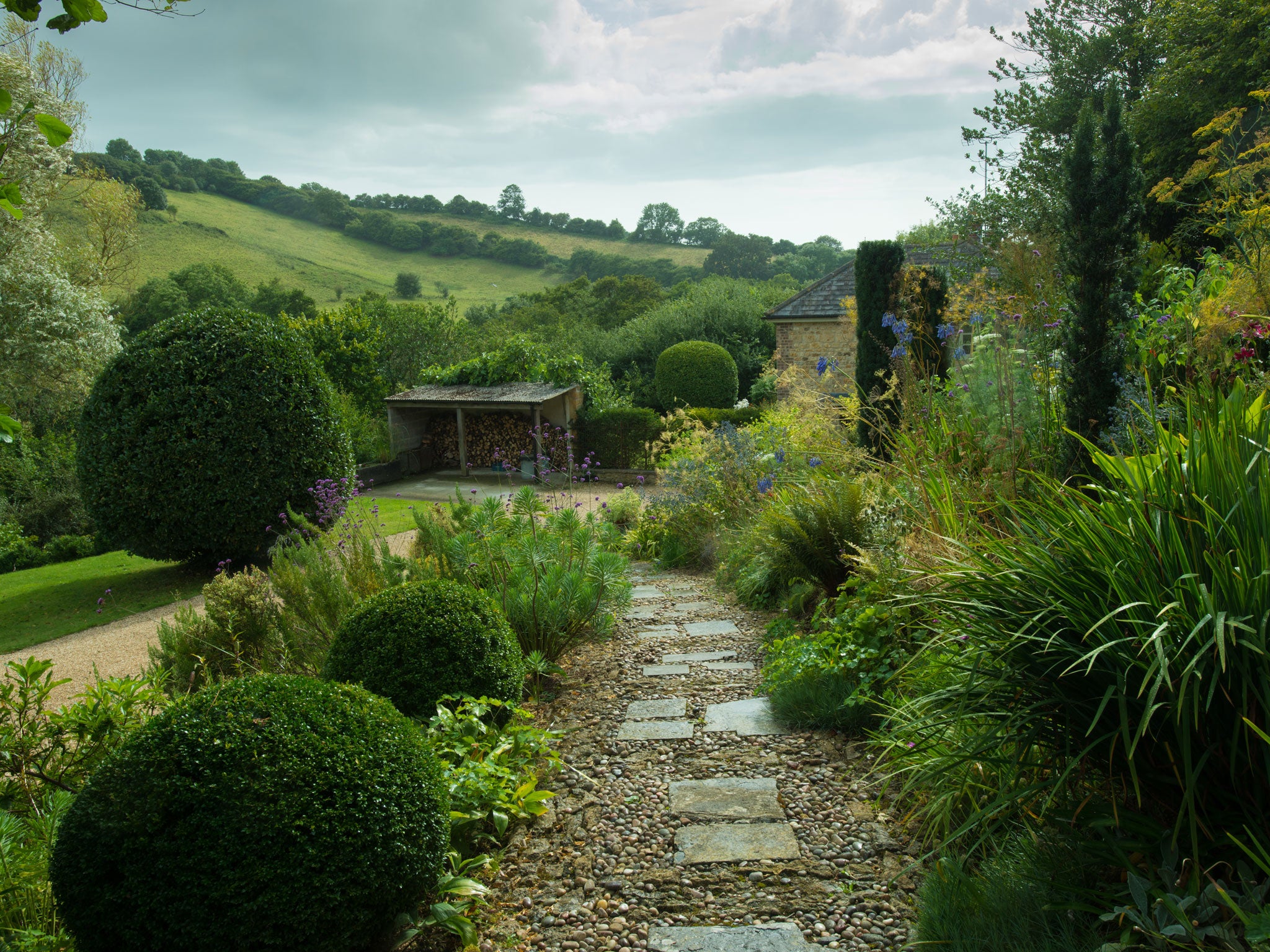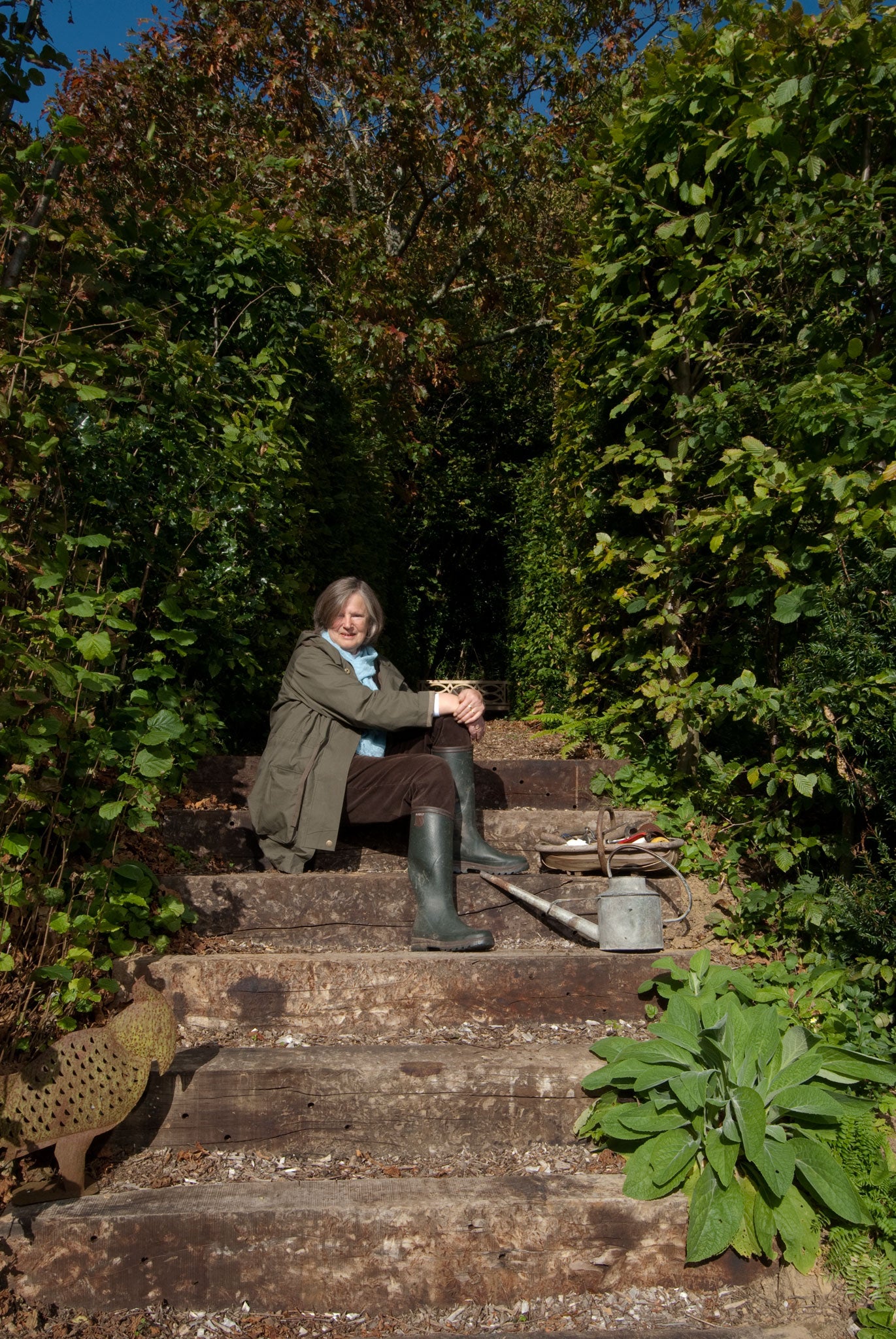Anna Pavord: 'Gardening brings a joy both physical and metaphysical'
It simultaneously connects us to and frees us from the wider world, says our gardening correspondent

Your support helps us to tell the story
From reproductive rights to climate change to Big Tech, The Independent is on the ground when the story is developing. Whether it's investigating the financials of Elon Musk's pro-Trump PAC or producing our latest documentary, 'The A Word', which shines a light on the American women fighting for reproductive rights, we know how important it is to parse out the facts from the messaging.
At such a critical moment in US history, we need reporters on the ground. Your donation allows us to keep sending journalists to speak to both sides of the story.
The Independent is trusted by Americans across the entire political spectrum. And unlike many other quality news outlets, we choose not to lock Americans out of our reporting and analysis with paywalls. We believe quality journalism should be available to everyone, paid for by those who can afford it.
Your support makes all the difference.Gardening is an escapism of sorts. By doing it, we make a cloak to throw around ourselves, a screen that softens the impact of the harsher world beyond. Left to herself, nature always tries to do this. Think of the postwar bombsites of London, colonised so quickly by willowherb. Or of the tarmac newly laid for off-road parking, pierced in spring by the buds of daffodils that for decades had bloomed in what was once the front garden. Plants are survivors. They were here millions of years before we were. And will continue, in some extraordinary, reinvented form, for millions of years after we have gone.
I find great comfort in this. "Willowherb over concrete" has become a kind of mantra for me. Roads will crack and crumble, but the flowers will go on. When we first start to garden, we think it is we who make everything happen in the plot. We make charts and timetables: sow beetroot, prune clematis, dig up potatoes. But if you stick with it, you eventually get through to a much more comfortable state, where you listen to your garden and take your cue from what it's trying to say.
To the trenchers and double-diggers of the gardening world, this might all sound ridiculously wafty. I don't mean it to. A garden is after all, a construct. The area of land round our house is very different from the fields that surround it, and it is our labour over the last 10 years that has made it so. And everybody's garden is a construct of a different kind. That is one of its greatest strengths. It can be anything we want or need it to be: a place to barbecue, a place for children to play, a place to grow food, a place to entice slow-worms and moths. It can be all these things at once, which is the magic of it.
It can, while we are in it, disconnect us from worry and sorrow. That is another of its great strengths. The philanthropists of the 19th century endowed hospitals and what were then called lunatic asylums with gardens because they understood that, on some level, there is a link between gardens and wellbeing. It's a ghastly term, "wellbeing", and not one that Victorians would have used. But all gardeners are aware of this remarkable ability of a garden to draw you in and envelop you.
Sometimes this is a passive process. We visit a garden. We are intrigued by the decisions that have been made by the person who planted it. Perhaps, although too rarely, we can admire a clever conjunction between the garden and the house that sits in it. This most often happens when the same person – Christopher Bradley-Hole perhaps or, in an earlier age, Edwin Lutyens, has been in charge of the design of both. Sometimes, too, we can pick up hints of the things that once happened in a place and that have since been overlaid. I don't mean the classic "lady in white" wandering though the shrubbery. More a sense of the designs and concerns of an earlier age.
Money is the greatest enemy of the survival of this spirit of place. But you can still find such spirit at, for instance, How Caple Court in Herefordshire, a garden of quiet and entirely agreeable melancholy, where a glade of huge trees leads down to a forgotten remnant of the Arts and Crafts age – curved stone seats, a massive pergola, olive jars, a water garden, all quietly hanging on, and affording ravishing views out through the undergrowth to the Welsh hills beyond.

I found the same intrigue and delight at Chippenham Park in Cambridgeshire, which I knew nothing about before I went there to look at its snowdrops. It's enchanting, precisely because it doesn't have the gloss, the set dressing, the trying-too-hard that ruins so many gardens which may be correctly free of weeds, but are also free of any sense of wonder and surprise.
Because Chippenham Park delighted me so much, I came home and ferreted about, looking for its history, which gave me almost as much pleasure as actually being there: a water garden designed by William Eames; an Anglo-Dutch garden of an even earlier age. None of it shouting. None of it "interpreted", thank heavens, because I had the pleasure of discovering the place for myself. I didn't feel I had to tick things off. But then I always read guide books after I've been to a place – never before. Before, you don't know what's going to intrigue you.
But as well as being an escape from the world, a garden also connects you to the world. A different world or course. Not the one that has to do with dentists' appointments and the possible arrival of trains, but a far more important world that moves to its own inexorable timetable. The moon swells and fills the night garden with ethereal shadows. The early summer green of the trees dulls as the leaves prepare to drift away to feed the foliage of the following spring. Bats, moles, grass snakes, dormice, ravens, buzzards, all go about their business. Hanging out of the bedroom window at half past four in the morning, I regularly count in more than 60 bats who whizz past my nose to return to a scarcely perceptible crack between the wall and the roof of the house.
Yes, we've gardened here. And loved doing it. We've made paths and terraces, put in steps, carted pots about. We've built a greenhouse, made a veg patch, and planted an orchard. We've put in a great number of hollies and oaks. Since we came, I've been consumed by two new passions, magnolias and arisaemas, as we now have the kind of ground that pleases them. Every day, I weed and cart water about, cut back stuff, urge on stuff. But the garden has its own ideas of where it wants to go and, at last, I've learned to take note.
This is my last column in my guise as gardening correspondent of The Independent, a role I've had since the paper began in 1986. My editor intends to reinvent me, and I'll be writing not just about gardening but more widely about nature and landscapes. I'll be back, as from next week. But thank you for listening.
WEEKEND WORK
WHAT TO DO
* Tie in new growths of dahlias and chrysanthemums. Disbud dahlias regularly for the best display of blooms. Trim hedges of box, beech, yew, holly, laurel privet and Leyland cypress. On second thoughts, grub out the Leyland cypress...
* Cut down canes of raspberries that have fruited, and tie in new ones. Also cut down the old foliage of strawberry plants, and dispose of the straw on the compost heap.
* Raid the garden centre for pots of autumn flowering 'Cyclamen neapolitanum'. Only now, when the plants are in flower, can you sort the pinks from the whites and plant separate drifts of each. No garden can ever have too many cyclamen.
WHAT TO SEE
* The Royal Horticultural Society bans gnomes from the Chelsea Flower Show, but there are some very personable ones presently on display at The Garden Museum, Lambeth Palace Rd, London SE1 7LB. They are doing the usual gnomish things – smoking, fishing, digging – surrounded by a choice selection from the museum's collection of old tools, photographs and paintings. The exhibition 'Gnome and Away' continues until 31 October. For more information call 020 7401 8865 or visit gardenmuseum.org.uk
Join our commenting forum
Join thought-provoking conversations, follow other Independent readers and see their replies
Comments